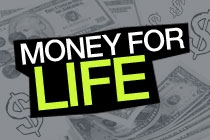//Student Loans: in-Depth
Many families, especially those with parents who never went to college, assume that a college education is out of reach. This couldn’t be further from the truth. Although education costs are rising, college remains accessible and affordable for nearly everyone.
There are many resources for assistance: scholarships, financial aid, education loans and college financing. Student loans make up the largest form of student aid.
The U.S. Department of Education administers the Federal Family Education Loan (FFEL) Program and the Direct Loan Program. Eligibility rules and loan amounts are identical under both programs, but the repayment plans differ somewhat.
The main difference is that you receive FFEL money from private lenders (such as credit unions). Direct Loan funds come from the federal government to your school, which delivers the money to you.
Both the FFEL and Direct Loan programs are generally known as Stafford Loans (for undergraduate and graduate students) and PLUS Loans, for the parents of dependent undergraduates.
There is also a government loan for students call a Perkins Loan, which is awarded to undergraduate and graduate students with exceptional financial need. A Federal Perkins Loan is a low-interest loan for both undergraduate and graduate students with financial need. Your school is your lender. The loan is made with government funds, and your school contributes a share. You must repay this loan to your school.
It’s important to understand all the options available because many times a student loan is the first major financial commitment a person makes.
For more information of student financial aid, visit www. studentaid.ed.gov. And don’t forget your local credit union. Many credit unions offer student loans, as well as scholarships, to assist their members.
Back to COLLEGE











